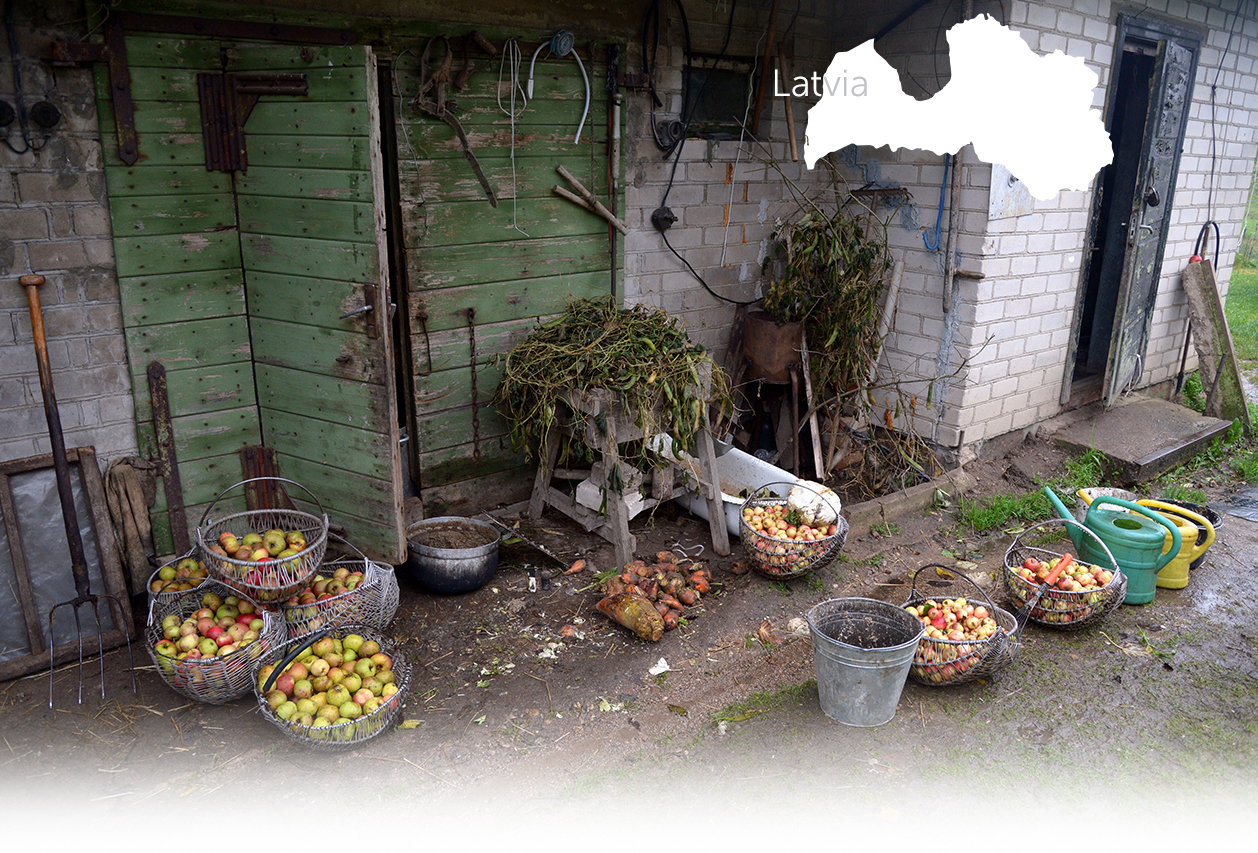

2 Execution site(s)
Edgars B, born in 1929: "At the beginning of the occupation, I remember that a part of the population reacted positively to the arrival of the Germans. The new authorities quickly created a police force composed of unpopular local people. One day, during the summer, the Jews were rounded up and put in the two synagogues. They stayed there for a few weeks. Then a truck took them to the Dzirgali forest, where they were all shot. There were about 100 victims. The bodies were reburied after the war in the Latvian cemetery. The smell was terrible. The former houses of the Jews were divided up and shared among the local inhabitants." (Witness n°60LV, interviewed in Aizpute, on October 7, 2019)
"On October 27, 1941, 3.5 km from the town of Aizpute, a mass execution of the Jewish population took place. On the morning of Saturday, October 25, 1941, the Jews were gathered in the synagogue. They were to be sent to the Riga ghetto and were ordered to take only their most valuable belongings with them. Under the supervision of aizsargs (Latvian militiamen), they remained in the synagogue until the morning of October 27, 1941. On that day, from 8 to 11 a.m., they were transported by truck to the place of execution and shot. The execution was organized and directed by the Germans, but it was carried out by aizsargs and policemen. A patrol consisting of aizsargs and policemen also blocked the road between Aizpute and Kalvene. Before and after the shooting, the victims’ valuables were taken away from them. Later, there was a public auction with these items.” [Act drawn up by Soviet State extraordinary Commission; GARF 7021-93-2390; pp. 49-53]
"I remember the executions of Jews in Hasenpoth. The Aussenstelle Libau asked the local Latvian police chief to form a firing squad. At Küggler’s request, I led at least three members of our Aussenstelle to Hasenpoth. My job was to make sure that the shooting went well. When we arrived, the chief of police told me that everything was ready and that the executions could begin. A little outside the town of Aizpute, we found 2 or 3 mass graves. There were 20 to 30 Jewish men and women. They had been shot in groups by a Latvian shooting squad." [B162-2628 RG-14.101M.0343.00001031 Bl. 1796]
Aizpute is a town located 150 km (93 miles) west of Riga, in the Kurzeme region of Latvia. Jewish life in Aizpute, then called Hasenpoth, dates back to the early 18th century, when a local synagogue was built. It was the first to be built in Latvia. Around 1750, ritual baths were also built near the building. At the end of the century, the annexation of the region to the Russian Empire accelerated the settlement of Jews in the city. At the beginning of the 19th century, a Jewish cemetery was subsequently built. During the interwar period, the name of the town officially changed from Hasenpoth, of Germanic origin, to Aizpute, the Latvian equivalent. In 1935, 534 Jews lived in the town, representing 16% of the total population. They had their own elementary school, but attended the same secondary schools as their Latvian neighbors. Two synagogues were then in activity. In June 1940, according to the terms of the German-Soviet non-aggression pact, Latvia was invaded by the Red Army and then annexed to the USSR. The properties of Latvians and Jews were nationalized.
On June 22, 1941, the German armies and their allies began their invasion of the USSR, marking the beginning of Operation Barbarossa. On June 28, 1941, Aizpute was captured. About 400 Jews still resided in the city at that time. As soon as the occupation began, the Jews were subjected to restrictive measures by the German authorities. For example, they were no longer allowed to use the sidewalks, were forced to wear a yellow star on the front and back, and their stores were closed. At the same time, a local Latvian auxiliary militia was created. In the summer of 1941, the first mass execution took place, during which an unknown number of Jews and Soviet activists were taken and shot near the farm of Rokaiži, located 3 km (2 miles) east of Aizpute. On July 24, 1941, between 35 and 39 Jews were rounded up in the Aizpute synagogue. They were taken to the Padure pine forest, located 3 km (2 miles) northwest of Aizpute. There, they were forced to dig a pit and were shot by members of the auxiliary militia, aizsargs. Finally, at the end of October 1941, about 400 Jews from the town and its surrounding area were moved to the two synagogues of Aizpute located near the market Square on the banks of the Tebra River. They were ordered to take their valuables with them. The German authorities used the pretext of moving them to the Riga ghetto. On October 27, once all of these people had been rounded up, the Jews were driven in trucks to the Dzirkaļi forest, 4 km (2.9 miles) southeast of Aizpute. Once there, they were led in groups of tens to a pit and shot by a German firing squad from Liepāja, consisting of about 20 men. 386 Jews were shot that day. At the end of the execution, the German authorities declared the town "Judenfrei" ("Free from Jews"). The valuables and clothing of the victims were kept in the Aizpute synagogue. The Germans arranged for public auctions to distribute these goods to the local population. The old Jewish houses were also taken over by local residents. The town was liberated by the Red Army in May 1945. Some of the remains of the corpses from these executions were then reburied in the Misinkalna cemetery.
Do you have additional information regarding a village that you would like to share with Yahad ?
Please contact us at contact@yahadinunum.org
or by calling Yahad – In Unum at +33 (0) 1 53 20 13 17